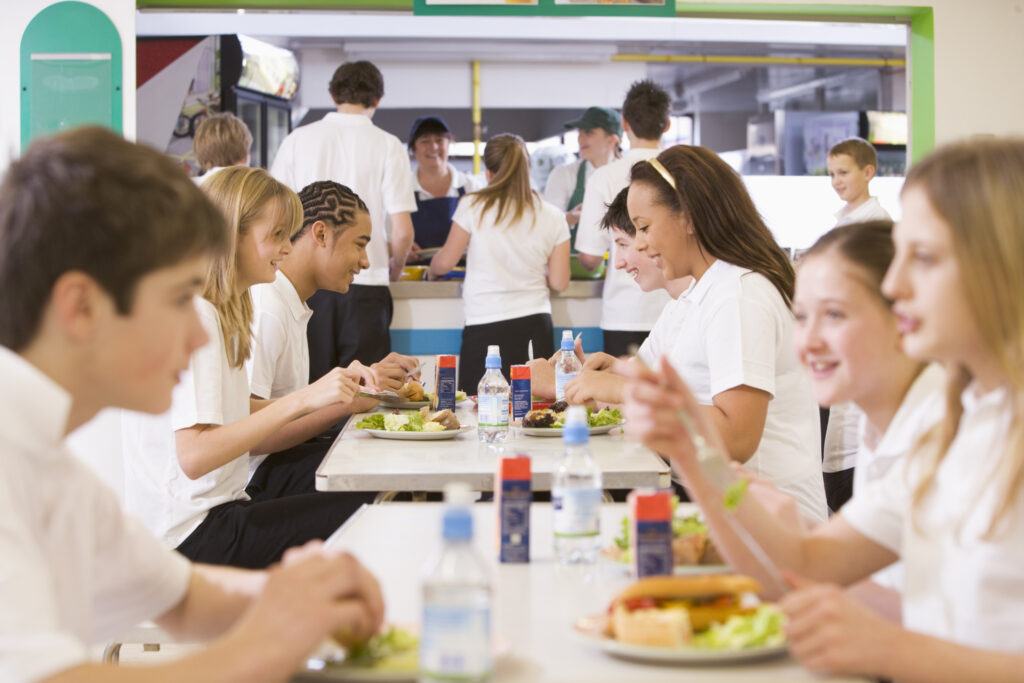Matthew Good, MS, RD, LD
For many students, the lunch period is a chaotic, anxiety-producing whirlwind of 25 to 30 minutes from bell to bell. Twenty-five to thirty minutes to dismiss from a class, get to their lockers, then to the cafeteria, wait in line, get to a seat, eat, dispose of their trash, and get to their next class. The answer is quite simple; demand that your administration provide more time for lunch.
Now that you’ve had a good laugh for the day, let’s discuss a few practical ways to provide efficiency to our school nutrition operations that can make school meals enjoyable and nutritious for our students. While we might not be able to fix the lunch period duration, we do have some control over the speed of the service line at lunch, or “students served per minute.” It’s a simple calculation. When the lunch line is fully queued, time out how many students pass through the point of sale in 60 seconds. For more precise data, try doing this consecutively for five or entire serving period, then averaging the rate.
Number of Students ÷ Minutes = Students/Minute
I’ve always used a goal of seven to eight students per minute in my operations. At peak service time, this rate allows my students enough time to all be served with comfortable remaining time to eat their meals.
If your line speed doesn’t meet this goal, it might be beneficial to evaluate a few easily controllable factors that can shave off valuable time.
Adequate Staffing
Does your operation have adequate staffing? Meal per Labor Hour (MPLH) is the most common measure of productivity in school nutrition programs. Colorado’s Department of Education has a great MPLH tool they’ve made publicly available. If you know your staff’s hours, meal counts, and can estimate if your operation is a conventional or convenience system, this tool can help you determine the adequacy of labor.
It may be challenging to convince administration that you require additional staffing, but this information can give you statistical evidence for your argument.
Staff Readiness
What is your staff doing at the time the lunch bell rings? Are they on the line in position to leap into action when the floodgates open? Are they still filling the warming tables with pans of food, or putting on their gloves as the students wait?
Having food on the service line just before the bell rings, staff in place with ready serving utensils, and backup food pans in warmers near the line can be an enormous timesaver!
Equipment Hardware Placement
Many districts have implemented a point-of-sale (POS) system into their operations, most of which will use biometric/barcode scanners or pin pads for students to self-identify and bring up their accounts. Software, such as i3 Education’s PaySchools, allows students to do this before reaching the cashier in the system’s queue. Once one student’s transaction is complete, the next student’s account appears automatically on the screen. Moving your operation’s pin pad or scanner two or three spots before the student reaches the cashier can save seconds on each transaction.
Some POS software, like PaySchools, also allows for multiple pin pads and scanners attached to a single terminal while still accurately populating and sequencing that digital queue of students in line. If your cashier is skillful and swift, your operation could run lines on each side of a single cashier, maximizing efficiency.
Equipment Hardware Review
Is your POS slow with processing speeds for each transaction? Does it take a few seconds to switch back and forth between menu screens? If so, it might be time for a hardware evaluation. i3 Education has put together a hardware assessment form that assesses if your POS equipment is capable of your operation’s current demands. Best of all, you don’t need to be an i3 Education or PaySchools customer to take advantage of this free tool.
Summing up, performing a little maintenance on our lunch line operations can drastically impact the rate of students moving through it expeditiously. Not only will this improve the student lunch experience, but participation and sales are sure to increase when students see that the line really isn’t that long anymore.

